Whether you adore neutral nails, avoid paint, or work the nail colors, having strong, healthy nails has a certain sort of power. One of those less obvious confidence boosts, like getting a nice pair of underwear just because or spending money on great socks to put beneath your boots, is having healthy nails (and even the benefits of proper nail cuticle care).
Whether you use nail care as a self-care ritual, a treat, or simply regular maintenance, it’s an investment that will pay off. And now for some good news: Time, not money, is the only investment necessary for strong nails.

Simple lifestyle choices, rather than expensive nail care products, are the greatest way to get stronger, longer nails. The use of your nails as a built-in pocket knife is one poor behavior that must be broken in order to have healthy nails. We asked the professionals about the common dos and don’ts of nail care to get practical, useful nail recommendations. You’ll soon grow longer, stronger nails if you follow these instructions.
Getting Strong Nails
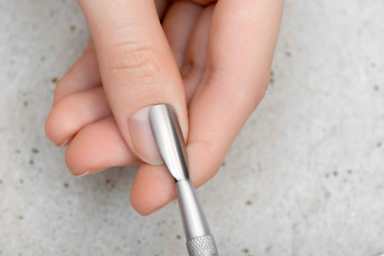
Keratin, a protein also present in skin, hair, and nails, makes up nails. Although keratin helps to shield nails from harm, it may also sustain injury. In order to preserve the keratin, everyday nail care is essential for strong, healthy nails.
You might have any of the following problems if your nails are prone to breaking and damage:
- Age.
- Lack of iron.
- A magnesium shortage.
- A lack of vitamin B.
- Excessive use of acrylic or nail polish.
- Nail drying and wetting cycles.
- Excessive exposure to chemicals or dampness.
1. Treat your nails gently
Treat your nails gently; they are sensitive. Dr. Stern advises against using metal instruments beneath nails because excessive digging may lead to onycholysis, a disorder that is prevalent in persons over 50 and causes the nail plate to split from the skin. Nails might get brittle while cleaning with chemicals or washing dishes by hand. Wearing rubber, vinyl, nitrile, or plastic gloves will protect them, advises dermatologist and professor Janet Prystowsky of New York City.
2. Always wash your hands thoroughly
Make sure your hands are fully clean after washing them by removing any polish remnants using an acetone-free remover that won’t dry out your nails. According to Ava Shamban, M.D., a dermatologist in Los Angeles and the author of Heal Your Skin, use soap on a clean toothbrush to gently scrub nails and the skin around them in order to remove debris and exfoliate any dead skin without using harsh, drying chemicals.
3. Put nail health ahead of length
Long nails are classy, but Dr. Shamban advises keeping your nails short for a while as you give them time to grow stronger if you’ve had problems with hangnails or breaking. You won’t have to expose your nails to additional wear and tear if you choose a shorter style with rounded edges since it tends to be simpler to handle and looks neater. You won’t notice the extra length as long as each nail is consistent in shape and matches its nine neighbors.
4. Regularly trim your nails
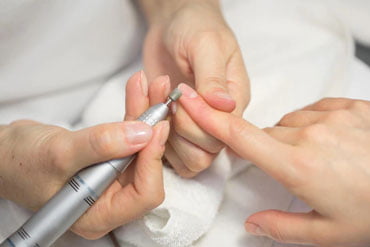
According to Dr. Prystowsky, regular trims help keep nails healthy and less prone to breakage and snags than they are to hair. Therefore, attempt to trim your nails every two weeks. Once you observe how your nails react, you may change the frequency as necessary.
5. Remember to care for your nail instruments as well
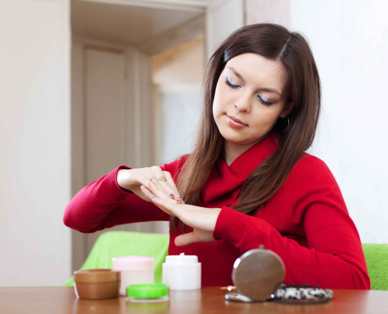
Because of microorganisms, routinely cleaning your cosmetic brushes is equally as vital as regularly disinfecting your nail instruments. Dr. Prystowsky suggests cleaning metal instruments with soap and water and then wiping them down with rubbing alcohol to prevent nail infections. A frequent replacement of disposable instruments like emery boards should also be remembered. When replacing a worn-out tool is so simple and only costs a few dollars, there is no need to keep using the worn-out one.
6. Constantly have a nail file handy
Dr. Prystowsky suggests having a nail file on hand to quickly smooth down any rough edges if your job or exercise regimen puts your nails at danger of harm. Work in a single direction with the grain of your nail for the smoothest finish.
Try using a glass (also known as crystal) nail file instead of an emory board, which may cause nails to peel and snag. The weakest, brittlest, and most damaged nails may all be filed using glass files, according to Dr. Stern.
7. Apply a base coat to protect your nails
Don’t omit the base coat while doing your nails at home. Dr. Prystowsky notes that by doing this, the color appears more rich and opaque with only one application while also protecting the nails from polish stains. Strengthening varnishes, according to Wnek, “leave a glossy hard covering on nails even without color; reinforce tips, making them look thicker; and may protect against breakage.” Dr. Shamban also advises putting a coat of clear gloss between each layer to offer more shine and protection if you really want to step things up.
8. Don’t touch your cuticles
The cuticle has a crucial job to do: it closes off the space around the nail’s base. Consider this before cutting or removing the cuticle since doing so might destroy the protective barrier, leaving you open to microorganisms and the risk of illness (as well as painful and unsightly tears). According to Dr. Stern, maintaining your cuticles also lessens the likelihood of getting those pesky hangnails.
Dermatology Associates of New York’s medical director Debbie Palmer, D.O., of Harrison, New York, suggests using a wooden orange stick to push back your cuticles once a week after taking a shower (when the skin is soft). Finish by applying a cuticle oil or treatment and massage your nails and cuticles. According to GH Beauty Lab scientist Danusia Wnek, “serum-like strengtheners are fast absorbed and generally include moisturizers to rehydrate dry, brittle nails.”
9. To avoid nail chipping, use a top coat
Also, don’t assume you can skip the top coat. This step is equally crucial since the top coat preserves the polish’s color and gives your fingers the much-needed gloss finish. In order to prevent chipping and prolong the life of your manicure, Dr. Prystowsky advises applying a fresh layer of top coat every three days.
10. Examine the polish’s labels
Make sure you’re using or purchasing a quality product since not all nail polish brands are made equal, much as with cosmetics and skincare. As these toxins may cause brittleness, splitting, and cracking, Dr. Debbie Palmer advises you to avoid polishes that include dibutyl phthalate, formaldehyde, and toluene.
11. Take a vacation from your nails
Keep your complicated manicure designs and those very pigmented, aggressive colors for the weekend, and give your nails a break with a clear gloss the remainder of the week. Dr. Shamban cautions that switching from one intense paint color to another without a pause might dry out your nails, cause them to become yellow, and eventually destroy the structure of your nails.
Nail polish removers, according to Dr. Stern, may possibly be the cause of your thin nails. Going completely natural “may be precisely what your nails need to revitalize and freshen,” the expert claims.
12. Use acrylic or gel treatments in moderation
No matter how handy or long-lasting acrylic or gel manicures are, every nail professional will try to discourage you from getting one because of how damaging they are to the nails. However, there are certain techniques to lessen the harm done to your hands and nails if you’re determined to acquire them.
The biggest problem with a gel manicure is that the UV radiation from the drying equipment exposes the skin under and surrounding the nail to harm, increasing the risk of cancer. Dr. Prystowsky advises using sunscreen with an SPF of 30 to 50 before the treatment to help prevent the damage, or you may try special gloves that only expose the nails themselves while protecting the rest of your hands from the damaging UV rays.
The Good Housekeeping Institute’s Beauty Lab also discovered a professional treatment that won’t damage your nails: CND’s Shellac Luxe salon service, which took home a Good Housekeeping Beauty Award in 2019.
13. When cleaning the dishes, put on gloves
We’ll say it again: Always use rubber, vinyl, nitrile, or plastic gloves, some of which include a cotton lining, while using corrosive cleaning agents, gardening, or doing anything else that requires soaking or dirtying your hands. Without gloves, washing dishes in hot, soapy water may weaken nails, and having them caked in dirt while gardening will demand a degree of cleaning that you should try to avoid.
Similar to this, when it’s cold outside, keep in mind to put on a pair of mittens or gloves to prevent the wind and cold air from undoing all of your moisturizing efforts and leaving you with dry, flaky, or scaly skin.
14. Regularly moisturize your hands and nails
Apply the same moisturizer on your nails as you would your face before night. Holly Falcone, a nail specialist in New York City, like to use a combination of almond and avocado oils to keep her cuticles and nails moisturized as she sleeps, but any nutrient-rich oil or moisturizer will serve. You may even apply a dab of lip balm in an emergency. According to Wnek, “effective formulations comprise humectant chemicals like glycerin, emollients like fatty oils, and occlusives like silicones, which work synergistically to moisturize nails and skin.
15. Eat a lot of foods high in protein
Just as you may increase the clarity of your skin or the luster of your hair by changing your diet, you can also improve the health of your nails since they are formed of a protein called keratin. Dr. Palmer advocates consuming protein-rich foods like beans, fish, and nuts, while Falcone advises adding vitamins and supplements like biotin, Vitamin E, and fish oil to your regular diet. One thing all experts can agree on is that if you find the formula that works for you, your nails will be stronger and clearer as a result.
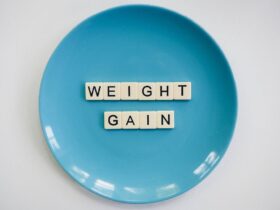







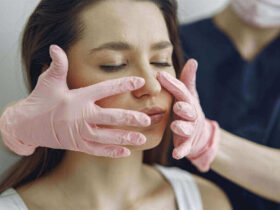

Leave a Review